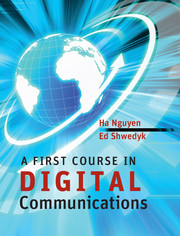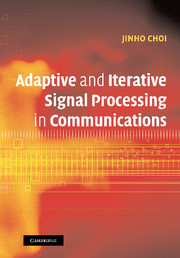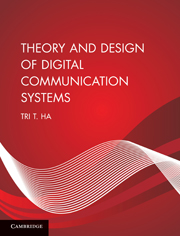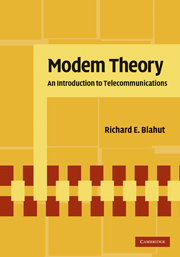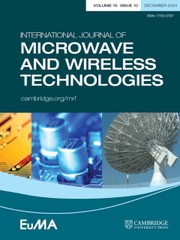A First Course in Digital Communications
Communication technology has become pervasive in the modern world, and ever more complex. Focusing on the most basic ideas, this carefully paced, logically structured textbook is packed with insights and illustrative examples, making this an ideal introduction to modern digital communication. Examples with step-by-step solutions help with the assimilation of theoretical ideas, and MATLAB exercises develop confidence in applying mathematical concepts to real-world problems. Right from the start the authors use the signal space approach to give students an intuitive feel for the modulation/demodulation process. After a review of signals and random processes, they describe core topics and techniques such as source coding, baseband transmission, modulation, and synchronization. The book closes with coverage of advanced topics such as trellis-coding, CMDA, and space-time codes to stimulate further study. This is an ideal textbook for anyone who wants to learn about modern digital communication.
- Covers the fundamentals in sufficient detail to allow students to master the basics without being overwhelmed
- Step-by-step examples and well-directed MATLAB exercises allow hands-on use of the key concepts to reinforce learning
- Mathematical derivations are complete, but kept clear and simple to ensure a thorough understanding
Reviews & endorsements
'The use of a step-by-step approach to the design of signal transmission and reception techniques with the aid of examples, illustrations, and problem solving linked to practical systems is very useful.' Falah Ali, Senior Lecturer in Electrical Engineering, University of Sussex, UK
'What makes this book different from the existing books are elaboration of simple concepts and more examples.' Hsuan-Jung Su, Associate Professor of Electrical Engineering, National Taiwan University
'The examples and problems constitute a very strong point in their text - they help to better understand the concepts.' Mónica Bugallo, Professor of Electrical and Computer Engineering, Stony Brook University, New York
Product details
June 2009Hardback
9780521876131
562 pages
252 × 195 × 30 mm
1.34kg
17 tables 286 exercises
Available
Table of Contents
- Preface
- Acknowledgements
- 1. Introduction
- 2. Deterministic signal characterization and analysis
- 3. Probability theory, random variables and random processes
- 4. Sampling and quantization
- 5. Optimum receiver for binary data transmission
- 6. Baseband data transmission
- 7. Basic digital passband modulation
- 8. M-ary signaling techniques
- 9. Signaling over bandlimited channels
- 10. Signaling over fading channels
- 11. Advanced modulation techniques
- 12. Synchronization
- Index.

